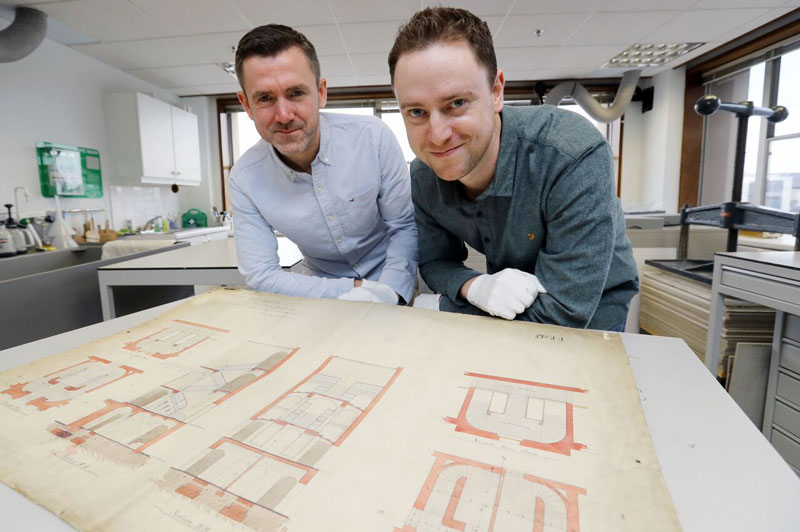Trinity today announced plans to digitally recreate the building and contents of the destroyed Public Record Office of Ireland, which will restore seven centuries worth of national history.
The Public Record Office and all its contents were lost to a fire at the Dublin Four Courts at the beginning of the Irish Civil War, in 1922.
The project, which is mooted for completion in time for the fire’s centenary in 2022, was launched at an event in the Trinity Long Room Hub Arts and Humanities Research Institute. The project will bring together Trinity’s four archival partners: the National Archives of Ireland, The National Archives (UK), The Public Record Office of Northern Ireland and the Irish Manuscripts Commission. It will be led by the School of Histories and Humanities alongside the ADAPT Centre for Digital Content Technology.
An accompanying website, which maps out the scope of the project in addition to demonstrating the technology it involves, was also launched today.
Entitled “Beyond 2022: Ireland’s Virtual Record Treasury”, the project will allow its users to experience a virtual tour of the digitally reconstructed Public Record Office. The original Public Record Office of Ireland was established in 1867 to collect and collate a single repository of the records of English governance of Ireland. Upon its destruction it housed a collection of records spanning from the 13th to the late 19th century.
The reconstructed “Virtual Record Treasury” is set to comprise a virtual reality reconstruction of the destroyed building. This reconstruction will be created using a combination of original architectural plans and photographic evidence. Users will be able to browse a complete inventory of survival and loss of the 1922 fire, with digitised versions of both surviving originals and substitute sources to be made available. The project will also make use of so-called “Gold Seams” evidence, whereby destroyed records will be reconstructed through the use of particularly rich substitute materials obtained from partner archives. Among these will be a 22,500 handwritten transcripts of government orders from the Cromwell era.
It is thought that the project, which is funded by the Irish Research Council, has the potential to transform understandings of Irish history. Speaking of the potential impact of the project in a press statement, Dr Peter Crooks, Principal Investigator of the project and Assistant Professor in the School of Histories and Humanities, commented: “We have the potential to transform the evidence base on which Irish history is written.”
“The archival collections date from such an early period of history, the reconstruction effort will allow anyone with an interest in researching their families or localities to engage in deep history, reaching back almost half a millennium earlier than most readily available genealogical resources”, he explained.
In a press statement, speaking of the legacy and educational potential of the project, Provost Patrick Prendergast said “by reconstructing a lost treasure, Trinity is seeking to create a lasting and meaningful legacy and an invaluable resource for researchers and educators at all levels which will continue to grow beyond 2022”.
Dr Séamus Lawless, an assistant professor at ADAPT and the School of Computer Science, said in a press statement that the project “has the potential to have significant impact on how people search for, interact with and consume information in virtual reality experiences”.







